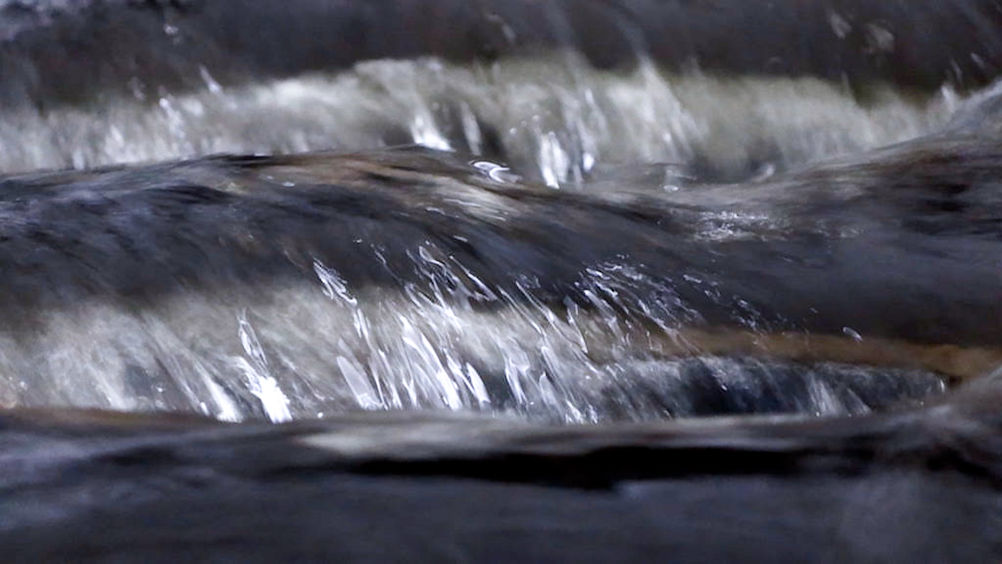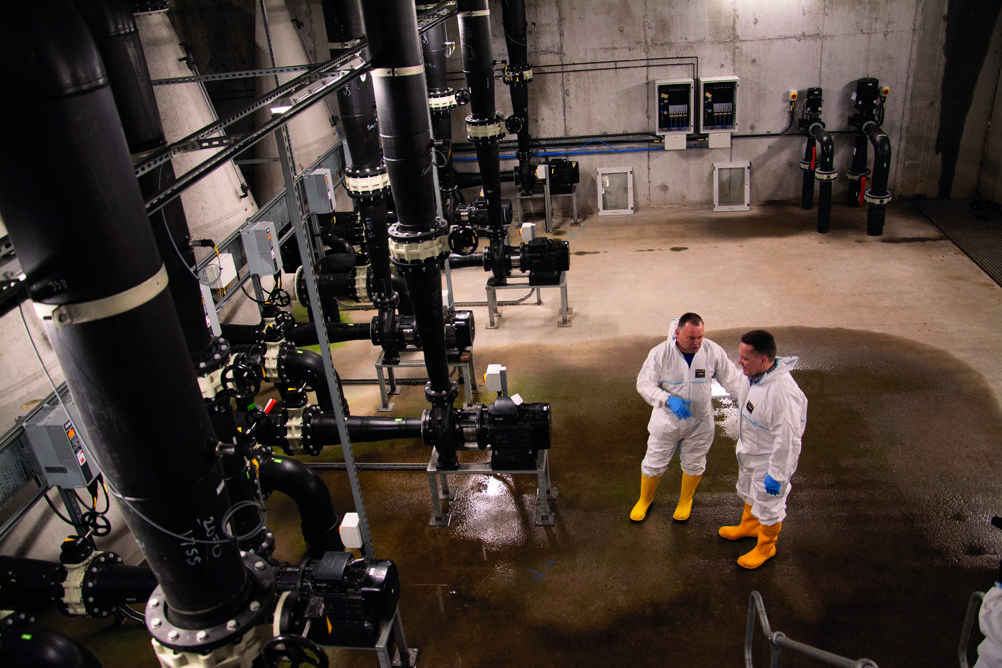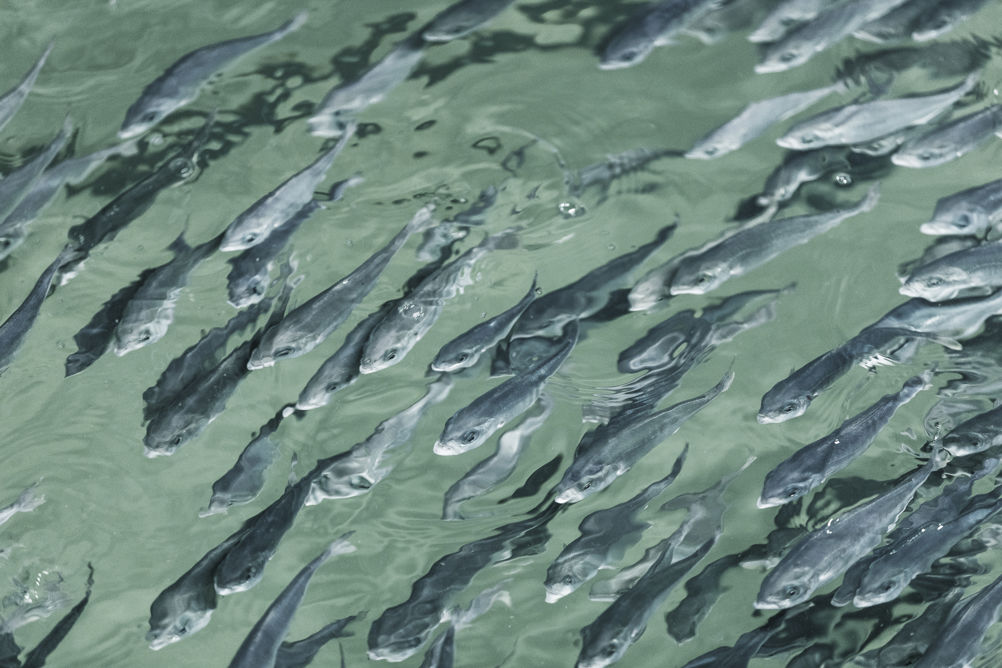How long has Grundfos been operating in the aquaculture market?
Mads Ravnsbeck: Grundfos has been operating in the aquaculture market for more than 25 years. Back in the mid-1990s Grundfos in Denmark began delivering pumps in a larger scale for the land-based aquaculture market. Grundfos in Norway followed just a few years later. Today many local Grundfos sales companies worldwide are involved, too.
Can you explain the role that Grundfos pumps play in aquaculture?
Within the aquaculture industry, product quality can be attributed to a number of variables which inevitably all depend on the flow and quality of the water being used to raise the livestock. Aquaculture system builders typically hold the responsibility for the design and optimization of all the water processes in the plant. This includes a requirement for the specification of a lot of pumps. Grundfos is a pump manufacturer focused on developing energy efficient equipment to effectively transfer and treat water. When we combine the two, the result is a partnership that results in cost effective aquaculture operations. We assist systems builders and owners/operators in selecting the proper pumps for their desired fluid flow but also help them avoid conditions that may inhibit effective pump operation. We help them balance upfront expenses with long term operating costs. While a RAS (Recirculating Aquaculture System) design requires the most pumping operations, Flow-Through (FT) operations may also require pumping as well. In a typical aquaculture facility, Grundfos pumps can be found on water intake, circulation, oxygenation, degasification, filtration, disinfection, temperature control, wastewater, discharge and chemical feed operations. We help designers and operators find the right pump for their operation by discussing their required flow conditions, water composition/salinity, materials of construction and resulting efficiencies while also providing relevant design and installation guidance.

What types of Grundfos pumps are used in aquaculture?
Grundfos is a manufacturer of both single stage and multi-stage centrifugal pumps and diaphragm dosing pumps. With such an extensive portfolio of products, we have technology suitable for a wide range of operations. One of our products best suited to this market is our high flow, low head end suction, single stage pump but we also have products suitable for the higher-pressure requirements of filtration operations, inline configurations, split case designs, bore hole and sewage pumps within our centrifugal portfolio. For the chemical dosing and water treatment operations, we have high accuracy digital dosing pumps that help users accurately control their chemical usage and improve their water quality.

How does Grundfos support the aquaculture market?
As the land-based fish farms are getting larger, they are using more water and therefore larger pumps/motors. Today’s RAS plants usually consist of 100–500 pumps. At the conclusion of such a project, the Grundfos scope of supply will typically include a site-specific product training to provide operators with a basic understanding of pump fundamentals and a hands-on familiarity with the pumps they have on site. There are a lot of things to be aware of – and to look after when you have so many pumps around you. We do not recommend waiting for the pump/motor to stop before you react, and training can assist operators in recognizing developing issues before they lead to bigger more expensive problems. For customers who prefer a more hands-off approach, we can also offer sensors and monitoring packages to assist with keeping pumps operating optimally. For the largest pumps/motors we have developed a service sledge system, where you easily can pull back the motor and impeller from the pump housing. Finally, we also offer a variety of services developed to help users get the most out of their pump investment, such as customized service contracts.
What common problems/challenges are encountered with the pumps used in aquaculture?
We are seeing that both the system builders and end-users are getting better and better with the pumps. For example, we are seeing less issues with the calculation of friction losses and the dimensioning of piping and layout than we have seen in the past. But we are still seeing issues and sometimes having trouble with a lack of consideration for the clearances required and accessibility to these very large pumps once they have been installed. Facility plans can have too little service space for the pumps, are missing lifting equipment, and include piping runs that have air pockets in the pipes. In the worst case, we have had to remove the concrete floor around the pumps to be able to change shaft seals.
What are the key trends in aquaculture and how are they impacting on pumps?
One of the main trends is that the smolt (young salmon or trout) are kept on land for a longer period than before – and of course the increasing interest in establishing grow out plants, where the fish are kept on land all the time. By keeping the smolt on land for a longer time, you can produce more fish per year – and in addition, reduce the number of times you need to treat the fish (salmon) against sea lice. With the grow out plants you can produce fish near your consumers and reduce freight costs and not at least the CO2-footprint. When talking about salmon, these trends are causing needs for larger water flows, pumps and motors. In addition, the bigger the salmon are, the higher salinity of the water ultimately required, which most often demands higher material quality and prices. The trends within the aquaculture market have been one of the main reasons for Grundfos developing end suction pumps in the sizes of DN350 and DN500 capable of meeting the high flow, low head demands at market leading efficiencies.

What challenges is the aquaculture industry facing in terms of changing regulations, increased production demand and sustainability issues?
In numerous markets increasing regulations (water intake, water outlet, “habitat destruction”, power availability, fish welfare etc) and “Not in my Backyard” (NIMBY) resistance have been substantial challenges. Plant owners are developing plant plans, budgets and funding before they have passed all of the regulatory hurdles. These hurdles add significant cost and time. The longer that the plants take to get the green light the more construction costs are increasing as other industries are also driving high levels of construction.
How can the pump suppliers help the industry face these challenges?
This is a very good and challenging question. With the world’s climate and “need for more food” challenges, all will have to contribute somehow. Grundfos is always searching for new ways of reducing our “CO2-footprint” and for making the pumps more efficient. Last year Grundfos had the honour of announcing our most significant long-term climate commitment in our sustainability journey. We had our Net-Zero Science-Based (SBTi) approved. Such commitment with SBTi means that Grundfos is taking even greater responsibility for the carbon that is emitted, not only when we manufacture our products, but also for the energy they consume when in use. 99% of our CO2 emissions come from using the products we sell, so by accelerating our own transformation to a net-zero future we are also helping our customers save energy. Our speed-regulated E-pumps, digitally enabled solutions and optimisation services are at the heart of these plans, and those are available for almost all processes found in industry.
How does the aquaculture sector achieve energy efficiency and how could it be made better still?
Energy efficiency in aquaculture is becoming a hot topic for multiple reasons including CO2-footprint, the energy crisis and as fish get bigger more water/feed/energy are needed. One positive thing about using larger pumps, is that they normally have a better efficiency. Today, frequency converters for all pumps and plate heat exchangers (reuse of energy) are usually standard now with the new large fish farms. And as mentioned above in the previous answer: The SBTi (the Science Based Targets initiative) journey is a hot topic these days, and we know that it will require significant innovation efforts, which also our customers eventually will benefit from.
What lies ahead for Grundfos and the aquaculture sector?
Land based aquaculture is no longer only for a small number of countries. There are of course (new) challenges in every new country where a fish farm is popping up for example higher water temperatures, long distances to recipients or special motor regulations. Grundfos already has a global sales and service network. To meet today’s and future aquaculture demands we have established a global aquaculture team, which is educating and collaborating with the local sales colleagues. So, the future is smelling good. A good smell of fish!
FURTHER READING
Mads Ravnsbeck was interviewed for our Aquaculture feature article in the September/October 2023 issue of World Pumps magazine. To read the full issue, click here.







